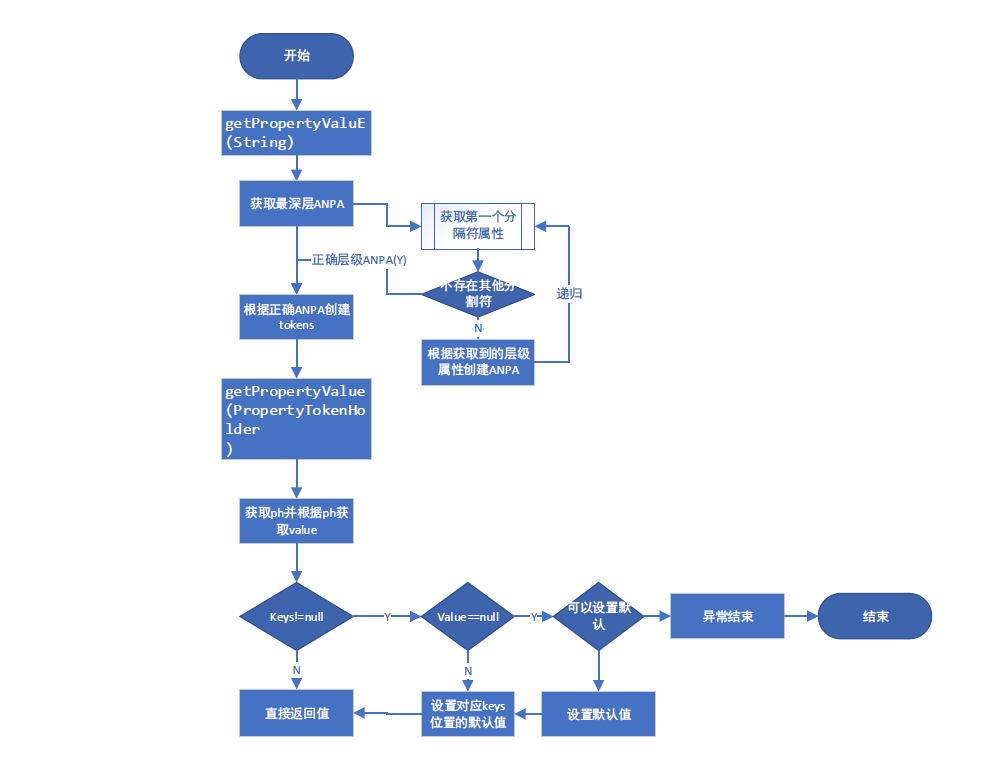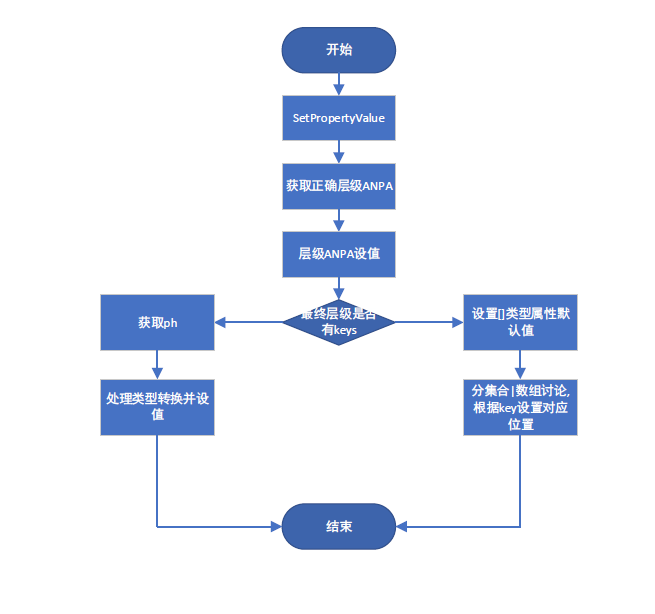1
2
3
4
5
6
7
8
9
10
11
12
13
14
15
16
17
18
19
20
21
22
23
24
25
26
27
28
29
30
31
32
33
34
35
36
37
38
39
40
41
42
43
44
45
46
47
48
49
50
51
52
53
54
55
56
57
58
59
60
61
62
63
64
65
66
67
68
69
70
71
72
73
74
75
76
77
78
79
80
81
82
83
84
85
86
87
88
89
90
91
92
93
94
95
96
97
98
99
100
101
102
103
104
105
106
107
108
109
110
111
112
113
114
115
116
117
118
119
120
121
122
123
124
125
126
127
128
129
130
131
132
133
134
135
136
137
138
139
140
141
142
143
144
145
146
147
148
149
150
151
152
153
154
155
156
157
158
159
160
161
162
163
164
165
166
167
168
169
170
171
172
173
174
175
176
177
178
179
180
181
182
183
184
185
186
187
188
189
190
191
192
193
194
195
196
197
198
199
200
201
202
203
204
205
206
207
208
209
210
211
212
213
214
215
216
217
218
219
220
221
222
223
224
225
226
227
228
229
230
231
232
233
234
235
236
237
238
239
240
241
242
243
244
| public void setPropertyValue(PropertyValue pv) throws BeansException {
PropertyTokenHolder tokens = (PropertyTokenHolder) pv.resolvedTokens;
if (tokens == null) {
String propertyName = pv.getName();
AbstractNestablePropertyAccessor nestedPa;
try {
nestedPa = getPropertyAccessorForPropertyPath(propertyName);
}
catch (NotReadablePropertyException ex) {
throw new NotWritablePropertyException(getRootClass(), this.nestedPath + propertyName,
"Nested property in path '" + propertyName + "' does not exist", ex);
}
tokens = getPropertyNameTokens(getFinalPath(nestedPa, propertyName));
if (nestedPa == this) {
pv.getOriginalPropertyValue().resolvedTokens = tokens;
}
nestedPa.setPropertyValue(tokens, pv);
}
else {
setPropertyValue(tokens, pv);
}
}
protected void setPropertyValue(PropertyTokenHolder tokens, PropertyValue pv) throws BeansException {
if (tokens.keys != null) {
processKeyedProperty(tokens, pv);
}
else {
processLocalProperty(tokens, pv);
}
}
private void processKeyedProperty(PropertyTokenHolder tokens, PropertyValue pv) {
Object propValue = getPropertyHoldingValue(tokens);
PropertyHandler ph = getLocalPropertyHandler(tokens.actualName);
if (ph == null) {
throw new InvalidPropertyException(
getRootClass(), this.nestedPath + tokens.actualName, "No property handler found");
}
Assert.state(tokens.keys != null, "No token keys");
String lastKey = tokens.keys[tokens.keys.length - 1];
if (propValue.getClass().isArray()) {
Class<?> requiredType = propValue.getClass().getComponentType();
int arrayIndex = Integer.parseInt(lastKey);
Object oldValue = null;
try {
if (isExtractOldValueForEditor() && arrayIndex < Array.getLength(propValue)) {
oldValue = Array.get(propValue, arrayIndex);
}
Object convertedValue = convertIfNecessary(tokens.canonicalName, oldValue, pv.getValue(),
requiredType, ph.nested(tokens.keys.length));
int length = Array.getLength(propValue);
if (arrayIndex >= length && arrayIndex < this.autoGrowCollectionLimit) {
Class<?> componentType = propValue.getClass().getComponentType();
Object newArray = Array.newInstance(componentType, arrayIndex + 1);
System.arraycopy(propValue, 0, newArray, 0, length);
setPropertyValue(tokens.actualName, newArray);
propValue = getPropertyValue(tokens.actualName);
}
Array.set(propValue, arrayIndex, convertedValue);
}
catch (IndexOutOfBoundsException ex) {
throw new InvalidPropertyException(getRootClass(), this.nestedPath + tokens.canonicalName,
"Invalid array index in property path '" + tokens.canonicalName + "'", ex);
}
}
else if (propValue instanceof List) {
Class<?> requiredType = ph.getCollectionType(tokens.keys.length);
List<Object> list = (List<Object>) propValue;
int index = Integer.parseInt(lastKey);
Object oldValue = null;
if (isExtractOldValueForEditor() && index < list.size()) {
oldValue = list.get(index);
}
Object convertedValue = convertIfNecessary(tokens.canonicalName, oldValue, pv.getValue(),
requiredType, ph.nested(tokens.keys.length));
int size = list.size();
if (index >= size && index < this.autoGrowCollectionLimit) {
for (int i = size; i < index; i++) {
try {
list.add(null);
}
catch (NullPointerException ex) {
throw new InvalidPropertyException(getRootClass(), this.nestedPath + tokens.canonicalName,
"Cannot set element with index " + index + " in List of size " +
size + ", accessed using property path '" + tokens.canonicalName +
"': List does not support filling up gaps with null elements");
}
}
list.add(convertedValue);
}
else {
try {
list.set(index, convertedValue);
}
catch (IndexOutOfBoundsException ex) {
throw new InvalidPropertyException(getRootClass(), this.nestedPath + tokens.canonicalName,
"Invalid list index in property path '" + tokens.canonicalName + "'", ex);
}
}
}
else if (propValue instanceof Map) {
Class<?> mapKeyType = ph.getMapKeyType(tokens.keys.length);
Class<?> mapValueType = ph.getMapValueType(tokens.keys.length);
Map<Object, Object> map = (Map<Object, Object>) propValue;
TypeDescriptor typeDescriptor = TypeDescriptor.valueOf(mapKeyType);
Object convertedMapKey = convertIfNecessary(null, null, lastKey, mapKeyType, typeDescriptor);
Object oldValue = null;
if (isExtractOldValueForEditor()) {
oldValue = map.get(convertedMapKey);
}
Object convertedMapValue = convertIfNecessary(tokens.canonicalName, oldValue, pv.getValue(),
mapValueType, ph.nested(tokens.keys.length));
map.put(convertedMapKey, convertedMapValue);
}
else {
throw new InvalidPropertyException(getRootClass(), this.nestedPath + tokens.canonicalName,
"Property referenced in indexed property path '" + tokens.canonicalName +
"' is neither an array nor a List nor a Map; returned value was [" + propValue + "]");
}
}
private Object getPropertyHoldingValue(PropertyTokenHolder tokens) {
Assert.state(tokens.keys != null, "No token keys");
PropertyTokenHolder getterTokens = new PropertyTokenHolder(tokens.actualName);
getterTokens.canonicalName = tokens.canonicalName;
getterTokens.keys = new String[tokens.keys.length - 1];
System.arraycopy(tokens.keys, 0, getterTokens.keys, 0, tokens.keys.length - 1);
Object propValue;
try {
propValue = getPropertyValue(getterTokens);
}
catch (NotReadablePropertyException ex) {
throw new NotWritablePropertyException(getRootClass(), this.nestedPath + tokens.canonicalName,
"Cannot access indexed value in property referenced " +
"in indexed property path '" + tokens.canonicalName + "'", ex);
}
if (propValue == null) {
if (isAutoGrowNestedPaths()) {
int lastKeyIndex = tokens.canonicalName.lastIndexOf('[');
getterTokens.canonicalName = tokens.canonicalName.substring(0, lastKeyIndex);
propValue = setDefaultValue(getterTokens);
}
else {
throw new NullValueInNestedPathException(getRootClass(), this.nestedPath + tokens.canonicalName,
"Cannot access indexed value in property referenced " +
"in indexed property path '" + tokens.canonicalName + "': returned null");
}
}
return propValue;
}
private void processLocalProperty(PropertyTokenHolder tokens, PropertyValue pv) {
[1]获取ph子类实现,见下文
PropertyHandler ph = getLocalPropertyHandler(tokens.actualName);
if (ph == null || !ph.isWritable()) {
if (pv.isOptional()) {
if (logger.isDebugEnabled()) {
logger.debug("Ignoring optional value for property '" + tokens.actualName +
"' - property not found on bean class [" + getRootClass().getName() + "]");
}
return;
}
else {
throw createNotWritablePropertyException(tokens.canonicalName);
}
}
Object oldValue = null;
try {
Object originalValue = pv.getValue();
Object valueToApply = originalValue;
if (!Boolean.FALSE.equals(pv.conversionNecessary)) {
if (pv.isConverted()) {
valueToApply = pv.getConvertedValue();
}
else {
if (isExtractOldValueForEditor() && ph.isReadable()) {
try {
oldValue = ph.getValue();
}
catch (Exception ex) {
if (ex instanceof PrivilegedActionException) {
ex = ((PrivilegedActionException) ex).getException();
}
if (logger.isDebugEnabled()) {
logger.debug("Could not read previous value of property '" +
this.nestedPath + tokens.canonicalName + "'", ex);
}
}
}
valueToApply = convertForProperty(
tokens.canonicalName, oldValue, originalValue, ph.toTypeDescriptor());
}
pv.getOriginalPropertyValue().conversionNecessary = (valueToApply != originalValue);
}
ph.setValue(valueToApply);
}
catch (TypeMismatchException ex) {
throw ex;
}
catch (InvocationTargetException ex) {
PropertyChangeEvent propertyChangeEvent = new PropertyChangeEvent(
getRootInstance(), this.nestedPath + tokens.canonicalName, oldValue, pv.getValue());
if (ex.getTargetException() instanceof ClassCastException) {
throw new TypeMismatchException(propertyChangeEvent, ph.getPropertyType(), ex.getTargetException());
}
else {
Throwable cause = ex.getTargetException();
if (cause instanceof UndeclaredThrowableException) {
cause = cause.getCause();
}
throw new MethodInvocationException(propertyChangeEvent, cause);
}
}
catch (Exception ex) {
PropertyChangeEvent pce = new PropertyChangeEvent(
getRootInstance(), this.nestedPath + tokens.canonicalName, oldValue, pv.getValue());
throw new MethodInvocationException(pce, ex);
}
|




